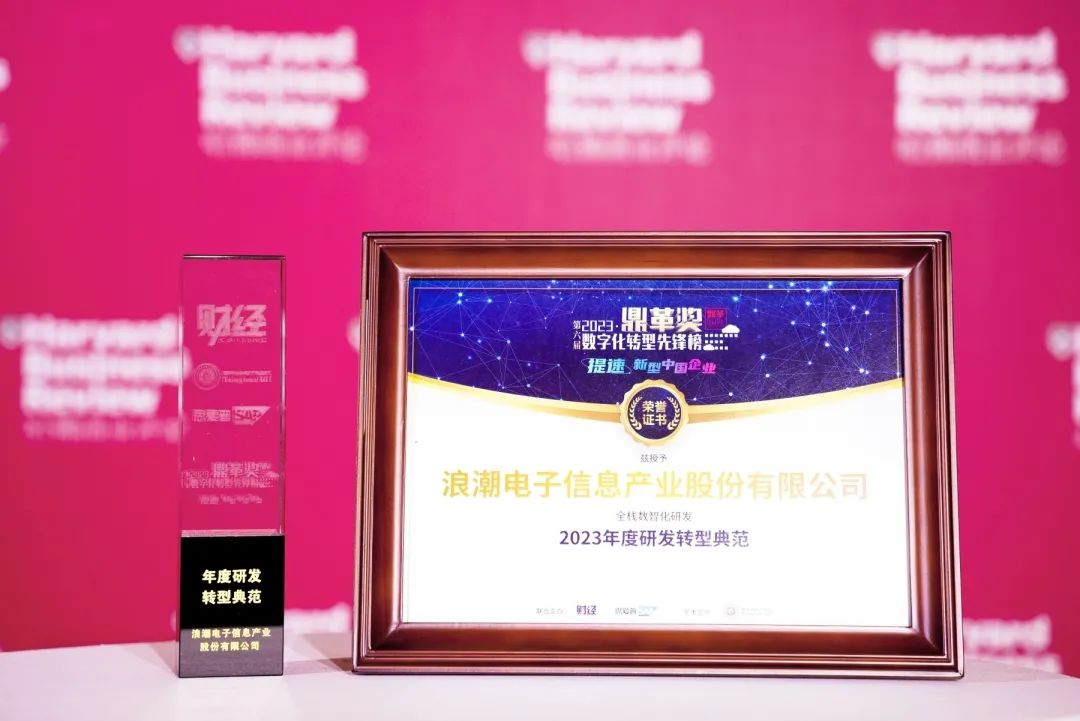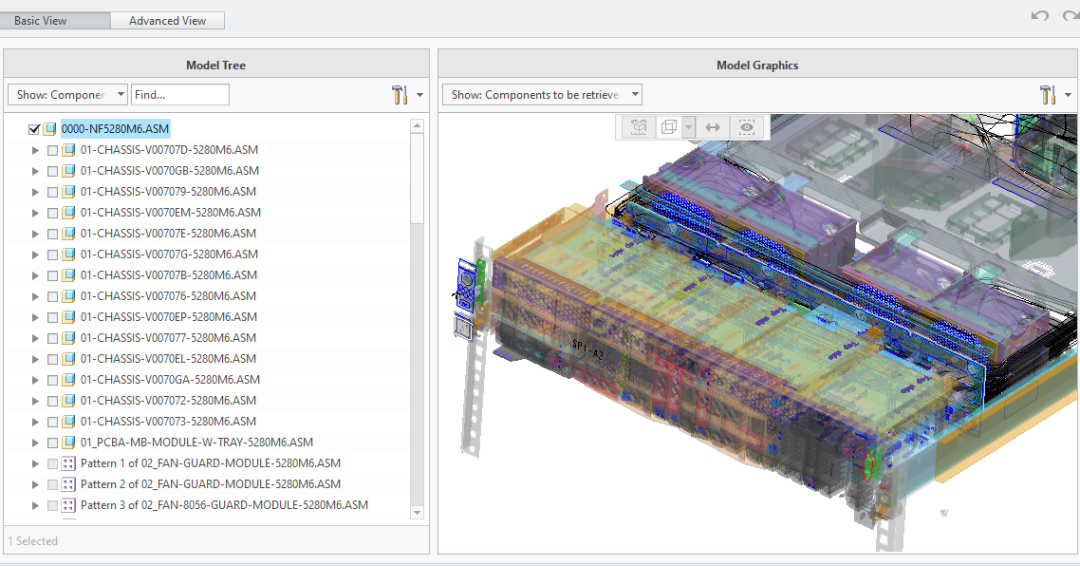On October 26, the 6th "Dingge Award" Digital Transformation Pioneer List was officially announced. IEIT SYSTEMS received the "R&D Transformation Model Award" for its "Full-stack Digital Intelligent R&D" program, among 51 other enterprises and institutions listed.

IEIT SYSTEMS has pioneered a "platform + modules" R&D model as part of its transition to digital intelligence, setting consistent domestic standards while initiating diversified server personalization and customization worldwide. The panel highly appraised the pioneering practice of IEIT SYSTEMS in demand-based, full-link, digital, intelligent R&D collaboration and the first application of digital prototypes in the server industry.
The Dingge Award is the most credible enterprise digital transformation award, co-founded by the Harvard Business Review, Tsinghua University's Institute of Global Industry, and SAP. After several rounds of field visits and reviews centered on "Accelerating Digital Transformation of New Chinese Enterprises," more than 30 experts selected a group of core forces that practice the new development concept with digital technology and lead the "acceleration" of digital transformation.
A "Platform + Modules" Model Is A Must for Agile R&D
R&D is the first step in meeting customers' needs. However, the traditional R&D model struggles to drive product updates with technology upgrades in order to respond agilely to customers' increasingly diversified and scenario-based needs. The server is a complex, high-tech product that houses over 10,000 components, 50 types of modules, 800 types of cables, and 30,000 parameters. Before it is successfully developed, a server must pass more than 6,000 processes and 50,000 design checks, including 23 types of design processes, 7 types of tests, and more than a dozen cross-functional collaborations. Therefore, it takes at least 1.5 years to develop a server in the traditional model.
In contrast, the modern "platform + modules" R&D model separates products into various standard modules using standard design and unified interface definitions. In this way, a prototype is created using existing modules that can be slightly modified to meet the needs of customers in a much shorter response time. However, the R&D processes of products, modules, and components at different levels intertwine in this new model, leading to the complexity of management and collaboration almost beyond the scope of traditional management. Therefore, the "platform + modules" R&D model has a natural demand for digital and intelligent technology.
Digital and Intelligent R&D Collaboration with Customers Engaged
IEIT SYSTEMS has developed an R&D digital system based on a product lifecycle management platform (PLM) and a global cooperation platform (GCP) to highly automate R&D management and collaboration, allowing its eight global R&D centers to collaborate efficiently and automatically synchronize their R&D processes across different products and modules, significantly improving collaboration efficiency and avoiding errors of all kinds. Automatic tracking in the requirement analysis process for servers with different generations of cpus , reduces human errors by 90% and saves 30% of the manpower.
In addition, PLM and GCP systems are open to users and partners, allowing them to participate in major product R&D processes ranging from principle design and system integration to testing and verification, as well as create an R&D ecosystem for server personalization and customization requirements. Customers and partners can collaborate with IEIT SYSTEMS to assess technical risks, management risks, and input-output ratios, resulting in increased R&D efficiency across the industry.
First Application of Digital Prototype in the Industry Enables Hardware Innovation and Customers’ Business Synchronization
Customers innovate in weeks or even days. In order to synchronize with their business innovations, IEIT SYSTEMS introduces the digital prototype to address the challenge of hardware innovation not synchronizing with software upgrades.
The digital prototype was initially developed in the automotive industry. IEIT SYSTEMS successfully rebuilt it in accordance with the server industry's business logic, resulting in the first digital prototype system. With the help of this system, engineers receive customer requirements, retrieve background data, and create three-dimensional models of products to replace physical prototypes for review and verification. The cooling performance, construction, power supply, and other conditions are visible at a glance and can be changed and upgraded at any time, allowing for rapid iterative innovation of hardware, just like software, shortening the R&D cycle and saving unnecessary R&D costs. In 2021, a major customer wanted to customize a cold-plated liquid cooling server. IEIT SYSTEMS successively developed more than 20 design versions in the form of digital prototypes, which helped the customer determine the overall design in just 6 months, significantly shortening the communication cycle and accelerating the customer's service launch.
Through the increasing integration of the new R&D model with digital and intelligent technology, IEIT SYSTEMS continuously improves R&D efficiency and agility, reducing the average R&D cycle of new product offerings by 50% from 1.5 years to 8 months, implying that customers will only have to wait 3 months from making a request to receiving a prototype as soon as possible.

A New Chinese Enterprise Leading Towards New Industrialization
IEIT SYSTEMS not only provides comprehensive digital intelligence in terms of management collaboration, tools, and products for intelligent R&D transformation, but it also achieves an overall upgrade of its business model based on digital intelligence technology by remodeling all business processes from R&D, supply, and manufacturing to customer service and innovating a new JDM (Joint Design Manufacture) business model. This unique practice of intelligent transformation serves as a model for the entire manufacturing industry.
It demonstrates that developing new models and types of businesses through digital and intelligent transformation is a viable path to the transformation and upgrading of China's manufacturing industry, serving as a model for new industrialization. The panel stated that "new Chinese enterprises" continue to accelerate their digital transformation process and that more Chinese enterprises will join in to lead in this new era. 2023 is the year of accelerating China's economic growth and speeding up the digital transformation of new Chinese enterprises. More new Chinese enterprises are hoped to be created so that the goal of new industrialization can be realized as soon as possible.
![]()



